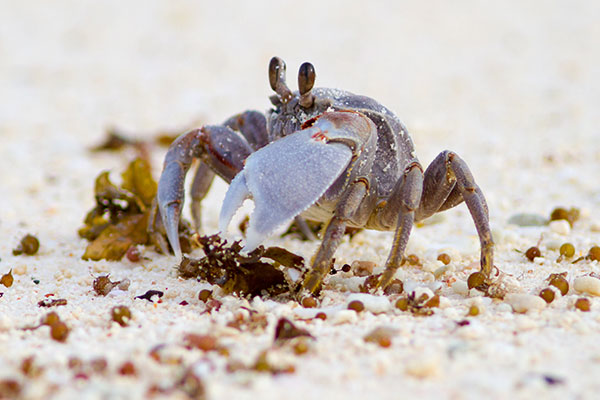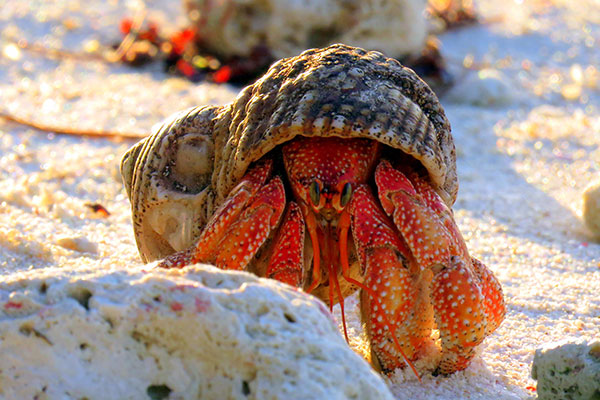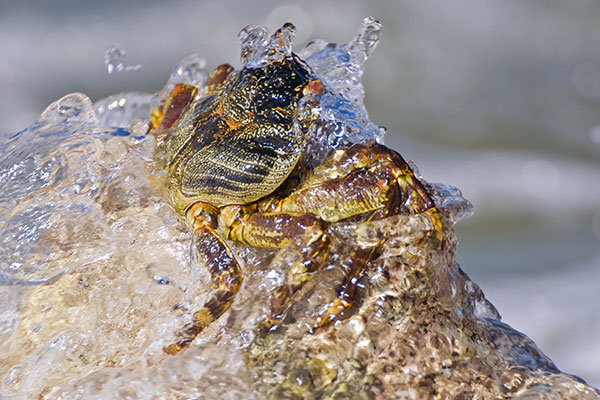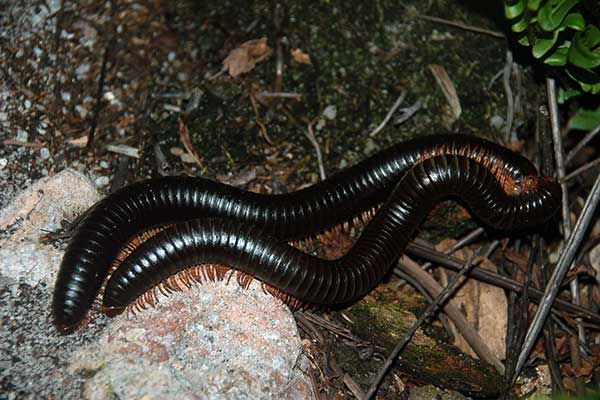The first habitat on Cousin encountered by visitors is the seashore, a great stretch of open-wide beach broken here and there by rocky outcrops. The sandy beaches are home to Ghost crabs, Molluscs, and sandworms. You will find the Hermit crab, throughout the plateau in search of decaying matter to eat, their legs and antennae protruding from a seashell. Endemic giant millipedes (up to 30cm long) can often be found under leaf litter or rotting coconut husks.

Ghost crab / Loulou grangalo / Ocypode ceratophthalmus & Ocypode cordimanus
There are two species of these pale-coloured crabs on the island. One with rather pointy eyes, the other with more rounded eyes. Both species can also be found on most other islands in Seychelles. On Cousin, they can be found on the beach and throughout the plateau, feeding on decaying matter. They burrow tunnels in the beaches, and at night, the males produce a grasshopper-like sound by vibrating their front claws.

Hermit crab / Solda / Coenobita rugosus & C.brevimanus
These terrestrial crabs can be seen roaming throughout the plateau in search of decaying matter to eat, their legs and antennae protruding from a seashell. When disturbed, they quickly tuck themselves into the shell, as did the shell’s original inhabitant mollusc. As the crabs grow they find bigger shells to live in – one reason why we ask visitors not to collect any seashells from the island.

Light foot crab / Karkasay / Grapsus tenuicrustatus
You might see these light-foot crabs jumping between rocks on Cousin Island, but they just as quickly leap out of sight when approached. They prefer to live among rocks where they can easily hide. Their flattened bodies and legs are well adapted to gripping the rocks even when they are being pummeled by waves.

Giant millipede / Milpat / Sechelleptus seychellarum
Endemic giant millipedes (up to 30cm long) can often be found under leaf litter or rotting coconut husks. They may look ferocious but are actually harmless, feeding on leaf litter and fallen fruits. Like other millipedes, they secrete a defensive chemical to protect themselves from predators.

